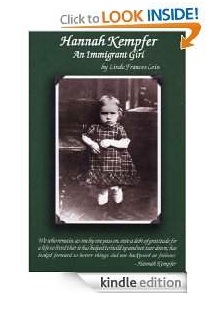Most people when they use the phrase point of view mean opinion. However, for a writer, point of view as a literary technique is also the vantage point from which the events of a story are presented. Selecting a point of view is one of the first major decisions a writer makes because it has a significant impact on all other decisions that are made in drafting a story.
The narrator—the person telling the story—of a work is not necessarily the writer—even when the writer uses first-person pronouns like I, me, my or we, us, our, etc. Who the narrator is determines the plot, the details included in the story, and how they are arranged. Who the narrator is impacts the style, language, and themes in the piece of writing. The following are types of narrators a writer can use to craft a story.
First-Person Narrator: A first-person narrator is a character who is part of the story. Often times the first-person narrator is the protagonist, the main character. However, sometimes the first-person is a lesser character that observes and tells the story as it unfolds. A first-person narrator draws the reader close to the story because the reader can identify with the narrator’s situation. For example, read how the narrator of “A Rose for Emily” by William Faulkner speaks for all the townspeople.
“A Rose for Emily” by William Faulkner
When Miss Emily Grierson died, our whole town went to her funeral: the men through a sort of respectful affection for a fallen monument, the women mostly out of curiosity to see the inside of her house, which no one save an old manservant—a combined gardener and cook—had seen in at least ten years.
Unreliable First-Person Narrators: An unreliable narrator is a first-person narrator who is not trustworthy. The unreliable narrator—intentionally or unintentionally—misrepresents events and as a result misdirects readers. For example, in the story “The Yellow Wallpaper” read how the narrator—a woman who suffers from severe postpartum depression—sees someone trying to get free from behind the wallpaper in her bedroom. Because she sees things through her depression, she is an unintentional, unreliable narrator.
“The Yellow Wallpaper” by Charlotte Perkins Gilman
There are things in that paper that nobody knows but me, or ever will.
It is always the same shape, only very numerous.
And it is like a woman stooping down and creeping about behind that pattern.
I don’t like it a bit. I wonder—I begin to think—I wish John would take me away from here!
Third-person Narrators: Third-person narrators are observers; they are not a character in the story. Some third-person narrators are all-knowing, moving from one character’s mind to another. Other third-person narrators are limited, focusing only on what one character’s experiences. And still other third-person narrators are objective where they remain exclusively outside the character’s mind. For example, in “The Story of an Hour,” written by Kate Chopin, the narrator is third-person limited following only Mrs. Mallard’s thoughts, actions, and feelings as the story unfolds.
“The Story of an Hour” by Kate Chopin
There were patches of blue sky showing here and there through the clouds that had met and piled one above the other in the west facing her window…There was something coming to her and she was waiting for it, fearfully. What was it? She did not know; it as too subtle and elusive to name. But she felt it, creeping out of the sky, reaching toward her through the sounds, the scents, the color that filled the air.
Now her bosom rose and fell tumultuously. She was beginning to recognize this thing that was approaching to possess her, and she was striving to beat it back with her will—as powerless as her two white slender hands would have been. When she abandoned herself a little whispered word escaped her slightly parted lips. She said it over and over under the breath: “free, free, free!”
I’m currently working on a novel titled Two Brothers, which is set in pioneer days in the late 1800s. When I first started it, I wrote it in first-person point of view from the perspective of White Bear, a thirteen-year-old Lakota boy. It wasn’t working, so I switched it to another character Robbie, a seventeen-year old white boy. That wasn’t working either, so I switched it again; this time to third-person. I didn’t like that at all. Then I read a novel that was written in first-person point of view, but each chapter was told from the perspective of a different character. Robbie, White Bear, and occasionally Robbie’s father, Nelson, are now telling Two Brothers. It’s working.
Although writers choose a point of view early in the process of writing a story, they sometimes have to rewrite a piece several times from different points of view before the right one is found.
What advice do you have for writers about point of view as a literary technique?
Works Cited
Chopin, Kate. The Awakening and Selected Stories. New York: Penguin Books, 1976. Print.
Faulkner, William. Selected Short Stories. New York: Random House, 1993. Print.
Gilman, Charlotte. The Yellow Wallpaper and Other Writings. New York: Bantam, 1989, Print.
